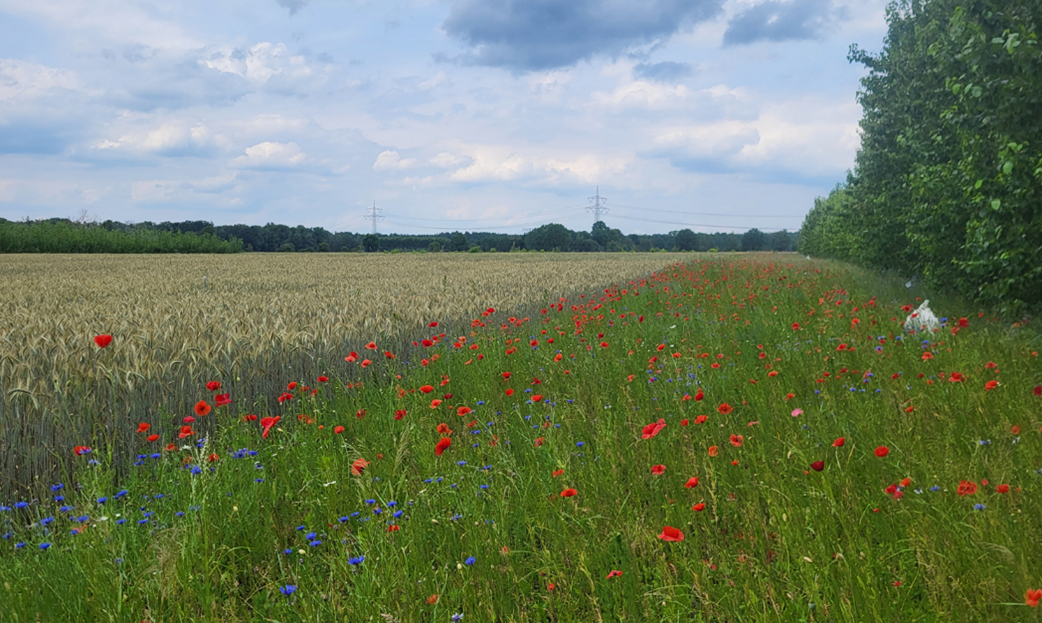Preserving biodiversity in agriculture
Fields, meadows and pastures are habitats for many wild animal and plant species. Agricultural landscapes serve as a food source and create breeding and refuge areas. The increasing intensification and monotonisation of agriculture is increasingly reducing the diversity of species. To prevent this, scientists led by Dr Tobias Rütting and Prof. Dr Klaus Birkhofer at the Brandenburg University of Technology Cottbus-Senftenberg (BTU) are researching the positive influence of agroforestry systems in close cooperation with the German Association for Agroforestry (DeFAF) e.V. The research project is being funded with a total of 1.37 million euros by the Federal Agency for Nature Conservation with funds from the Federal Ministry for the Environment, Nature Conservation, Nuclear Safety and Consumer Protection and the Brandenburg Nature Conservation Fund Foundation. The BTU Cottbus-Senftenberg received 1.02 million euros.
Research into agroforestry systems has been conducted at BTU for many years. "Agroforestry systems store water more effectively, reduce soil erosion caused by wind and create new habitats for animals," says former project manager Dr Christian Böhm. The initial results of the species monitoring show that agroforestry systems have an impact on the occurrence and abundance of the species groups studied across all locations. "There are indications that there is a positive effect on the pest-beneficial insect ratio, with harmful insects decreasing and beneficial insects increasing," says project manager Dr Tobias Rütting. There are also indications of a promotion of rare and endangered species. The researchers want to know what positive effects agroforestry systems have under current climate conditions and under simulated, lower precipitation conditions - as expected as a result of climate change.
The knowledge gained in the project will be used to explain fundamental relationships between insect populations and structural diversity in agricultural landscapes in order to derive meaningful measures for intact biodiversity in further steps.
The study area
The studies are being conducted on three agroforestry areas in the southern and eastern state of Brandenburg. The agroforestry areas are characterised by simply structured, five to ten metre wide wooded strips of one to three tree species. In addition to the tree and arable crop areas, self-vegetation and flowering strips, which are located directly at the edge of the wooded strips, are also included in the investigations.
About the project
In addition to the Brandenburg University of Technology Cottbus-Senftenberg (BTU), which is primarily responsible for coordinating the project, data collection and insect monitoring, the German Association for Agroforestry (DeFAF) e.V. is primarily active in the areas of public relations and science communication and the German Association for Landscape Conservation (DVL) e.V. in the field of landscape analysis. Four farms provide the land.
Funding priority: Securing ecosystem services
Federal state: Brandenburg
Duration: September 2022 to August 2027
Total funding volume: 1.365 million euros
BTU funding volume: 1.02 million euros
Project management organisation: Brandenburg University of Technology Cottbus-Senftenberg (BTU), German Association for Agroforestry (DeFAF) e.V., Deutscher Verband für Landschaftspflege (DVL) e.V.
Funded by: Federal Agency for Nature Conservation with funds from the Federal Ministry for the Environment, Nature Conservation, Nuclear Safety and Consumer Protection and funds from the Brandenburg Nature Conservation Fund Foundation

